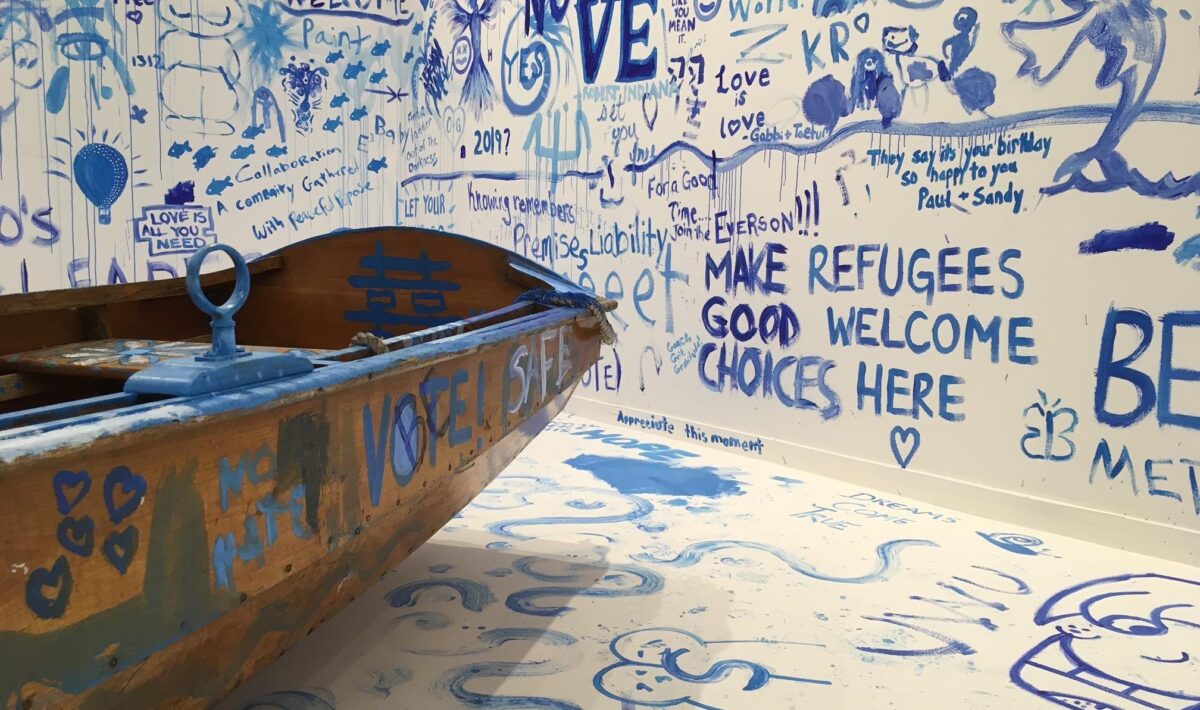At the age of 25, John Lennon came to the exhibition, where there was a stepladder in the center of the hall. He climbed it and through a magnifying glass was able to examine the word written on the ceiling. It was the word yes. As he said later, had the word “no” been written there, his life would have been different. It was an exhibition of Yoko Ono, one of the most important figures in American conceptual art. Her most famous works are poetic “instructions”, which urge the viewer to do sometimes the most unexpected, and sometimes quite everyday things.
On Yoko Ono’s birthday – February 18, the artist turned 88 years old – we propose to live one day according to her instructions. You can even do one per hour: watch the sunset, watch loved ones, fly, and sometimes answer phone calls.
Yoko Ono worked at the intersection of literature and visual art.
Unlike Duchamp, decided not to dwell on the material world and proposed to completely replace the immediate object with an idea, saying that now this idea itself is already a product of art. She presented the world with “Instructions”: cards with a text of lengthy, sometimes absurd content printed on them. No picture, painted with paints or pastels, no sculpture, the texts were not accompanied. “Instructions” were meant as independent works, in no way inferior to visual art forms. They are often called a special kind of hokku – short philosophical statements on a topic. But the titles of Yoko’s works immediately make it clear: her texts are not poetry at all, but a new, special type of painting. “Painting to look at the sky” encourages the viewer to draw the sky in his imagination, “Painting to create it in his head” – to visualize the text just read in his mind, and “Painting to shake hands” is actually to shake hands.
“INSTRUCTIONS” ARE JUST CARDS?
Not just cards and not just cards. Over the long years of the existence of “Instructions”, the main idea remained unchanged, but its implementation changed. At first, these were cards with text that the audience was asked to visualize. Then objects were added to them, with which it was possible and necessary to interact directly. This was the work under the characteristic Yoko title “Painting to Drive a Nail.” Understand the name literally: in front of you is a canvas and a handful of nails. Take a nail and hammer it into a piece of canvas, complementing the work of those who came to the exhibition earlier and have already followed the instructions. Thus, the visualization of sculpture is added to the synergy of literature and painting, which is familiar to Yoko Ono. Through this work, Yoko wanted to remind people of the importance of joining forces sometimes. John Lennon, the legendary singer, lead singer of The Beatles, whose wife Yoko Ono was until his death, also played an important role in the formation of this idea. His songs were sung all over the world, even people who did not know English.
And the idea of uniting humanity has always impressed Ono, despite the fact that its ambitions went far beyond the boundaries of pop culture. Nowadays, many of Ono’s art objects are aimed at connecting different people, regardless of their nationality, social status, orientation, political views – for example, you just need to go to a picture and hammer a nail into it, which will become a small piece of common work.

